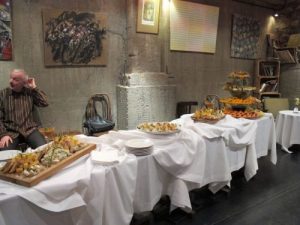National art Gallery
The National Gallery of Armenia is the country’s major art gallery. Its collection is displayed in 56 galleries, which allow the Gallery to tell the story of national visual arts, decorative-applied arts as well as world culture from ancient times to our days. In the galleries of European, Russian, Armenian and Oriental art the visitors are introduced to the art of Aivazovsky, Sarian, Kandinsky, Donatello and other distinguished artists.
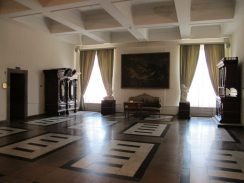

The National Gallery of Armenia was founded in 1921 by the decision of the Soviet Armenian Government, as the Art Department, one of the five departments of the State Museum.
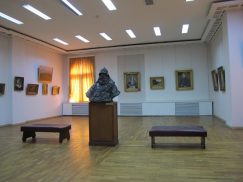
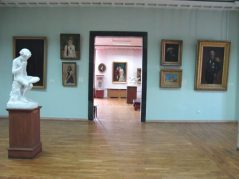
Genocide Museum
9th of November. That morning we heard that Trump was elected to be next president of the U.S.A.
Everybody was disturbed by the news, angry, moody, sad, anxious. But life goes on, as does our visitors’ program. So at one ‘o clock we left the hotel by taxi’s that would bring us to the Genocide Museum. Our taxi driver, instead of the navigator, had Trump’s victory speech on his gps. He could still easily find his way. Soon we arrived at the top of a hill with great view over the city that even gave us a glimpse of Mount Ararat.
Quite painful actually as that mountain is now located in Turkey. We would hear all about this history soon in the museum.
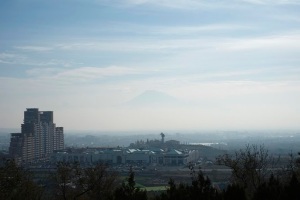
The entrance of the Museum is impressive. First you walk through a lane with left and right planted pine trees in different stages of growth, planted by important visitors to the museum; presidents, survivors, spiritual leaders, famous singers. It showed their recognition of this horrible event.
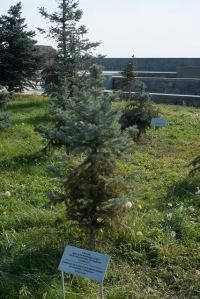
It reminded me of a Facebook post of a friend earlier that day, a response to Trumps victory. “If I knew that the world would end tomorrow, I would still plant apple trees today” ~ Martin Luther King. The tone was set. During the whole tour through the museum, seeing the images, hearing the stories, my thoughts were shifting from the Armenian genocide associatively connecting it with the recent refugee crisis, the important role of Turkey in this, the islamic state, the Jewish holocaust, Yugoslavian war to a future with Trump as American president and back. Christianity versus islam. History repeating? My thoughts became a mess, my mood even worse.
But first we still had to enter the museum.
After the pine tree lane you arrive at a plateau, all made out of grey flat stones. To enter the museum you have to go down into an entrance that easily could be seen as an bunker entrance or a gravestone…smart architecture.
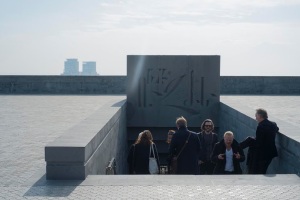
A woman of the museum guided us through all the different stages of the history of the genocide.
I knew about it, but that it was so carefully planned and cruelly carried out in at least 3 different stages, I had no clue! It made me realize that the media in the west is still extremely focused on what had happened during the holocaust that you easily miss out the details of terrible other historical and more recent massacres.
We learned about the Adana massacre of 1909, and that postcards were being made to show the ruined city to the world.
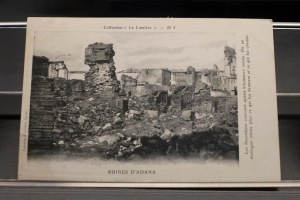
We learned about the strategic deportations of the Armenians lead by the young turks during the Ottoman Empire.
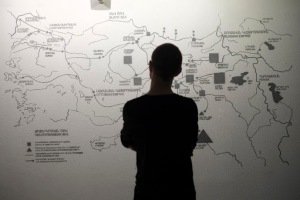
We learned that during that first stage of genocide, 1915- 1916, the german soldier and photographer, Armin T. Wegner, happened to be there and shoot a lot of photo’s that he brought back to Germany after the war.
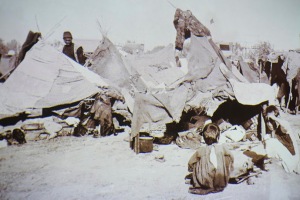
We leaned about heroic stories of survivors of the massacres, for example the one of Aurora Mardiganian, the Armenian Jeanne d’arc, who’s dairy was first published in 1918 under its title Ravished Armenia, later under the beautiful title ‘The auctions of souls’. They even made a Hollywood production of it, with her in the main role. But because of diplomatic reasons between USA and Turkey it vanished from the radar. Only a couple of minutes are left of the film.
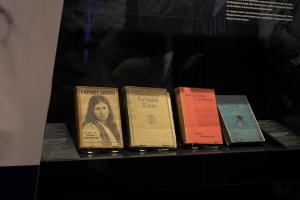
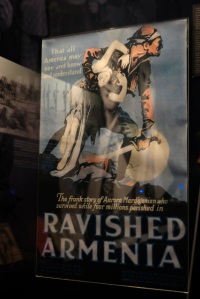
We learned about 4000 Armenians on a defence mission near Mount Musa, placed in the former province of Aleppo, who were later rescued by french battleships and brought to safety in Egypt.
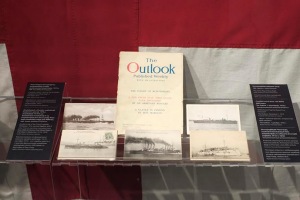
We learned that other countries got sight of what was happening with the Armenians, among them the Dutch Limburgs Dagblad.
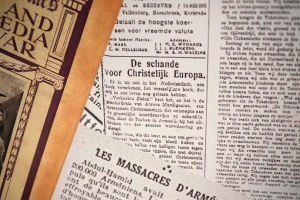
We learned about the destruction of the national Armenian heritage.
We learned about the young turk criminals brought before the Court between 1919-1920, and about justice and retribution.
Arshavir Shirakian, an Armenian genocide survivor, for example had taken revenge by liquidating Djemal Azmi, a former governor of the Trebizond province who had fled to Berlin. First Ashavir was convicted for this act of killing, but not that much later released from prison.
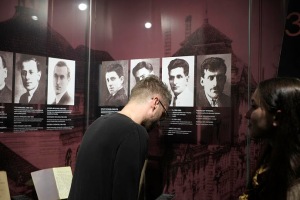
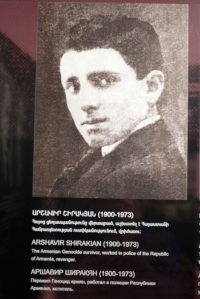
Luckily the museum tour had somehow a positive ending. In September 1915 the Armenian Relief Committee was established in the USA. In November 1915 it became the American Committee for Armenian and Syrian Relief, later named Near East Relief (NER). With help of NER humanitarian aid was given to thousands of destitute people in the near east region. The NER undertook the care and education of Armenian Orphans in the republic of Armenia.
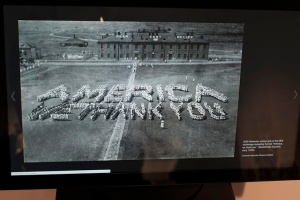
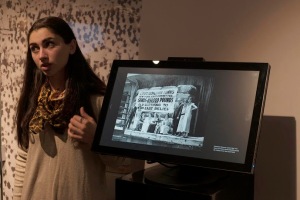
Especially seeing those orphans, the promising future generation, gave hope.
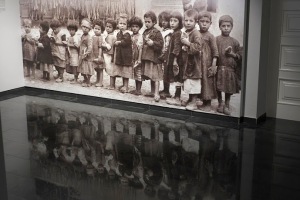
An orphan boy was found in the desert. Being deprived of care and living with desert animals for two years, he lost his human identity and had become wild, Aleppo, 1920-1921.
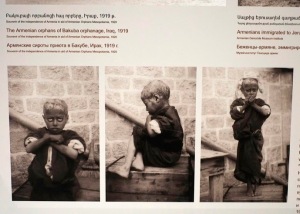
In the taxi, on our way back, the driver switched on the radio. A beautiful melody set in that corresponded perfectly with our mood. James asked the driver to put up the volume…sad alone…driving back into the city.
Koop – Island Blues
hello my love
it’s getting cold on this island
i’m sad alone
i’m so sad on my own
the truth is
that we were much too young
and now I’m looking for you
or anyone like you
we said goodbye
with a smile on our faces
now you’re alone
you’re so sad on your own
the truth is
that we run out of time
and now you’re looking for me
or anyone like me
By Paulien Oltheten
Modern Art Museum
We are received by the director of the museum Mrs. Noune Avetisyan. The museum is packed with works because they want to show as much as possible to the visitors she explains.
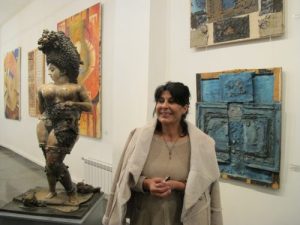
The director tells us how the Modern Art Museum in Yerevan was established in 1972 by the art critic Henrik Igityan, who was the director of the museum for 37 years. H. Igityan received a great support from the mayor of Yerevan of those years Grigor Hasratyan, as well as from the best Armenian artists of 1960s. As a specialized museum of contemporary and modern art it became the first in the Soviet Union. The first exposition was compiled of the works of the artists of 1960s both from Armenia and Diaspora, who have kindly donated their works to the museum.
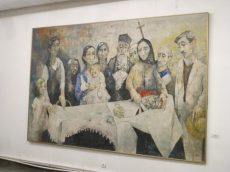
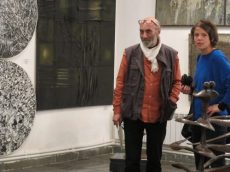
The existence of the monopoly of the socialist realism in the Soviet Union prohibited modern art in all its expressions. Therefore, no financial assistance was provided by the Government of Armenia and museum was opened thanks to the artists’ donations.
The works of the generation of 1960s, in particular, Minas Avetisian, Ashot Hovhannisian, Martin Petrosian, Hakob Hakobian, Gayane Khachaturian, Vruyr Galstian, Henry and Robert Elibekyans, Harutyun Galents, Rudolf Khachatrian, Ashot Bayandour today also are the main axis of the museum exhibit.
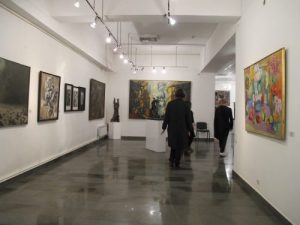
Later on the exposition was fulfilled with the works of the younger generation, the generation of 1980s: Sargis Hamalbashian, Arthur and Ararat Sargsians, Marine Dilanian, Albert Hakobian, Samvel Baghdasarian, Arevik Arevshatian, Ruben Grigorian, Kamo Nigarian, Armen Gevorgian, Tigran Matulian, Teni Vardanian, Gabriel Manoukian, Nina Kchemchyan, Ayvaz Avoyan etc.
The importance of the existence of the Museum was mentioned by a famous Russian art critic Alexander Kamenski in 1979: “… From the very beginning, the museum was a utopian idea. The initiators had neither a building for their exposition, nor the resources to buy art-works. They had, however, something more important and valuable. They believe that it is indispensable for Armenia to see and understand the new image of its contemporary art…”
Recently the collection of the Museum was enriched with the works of both Armenian and foreign masters, such as: Taline Zabounian (France), Sam Grigoryan (Germany), Harutyun Jinanyan (Jino) (Russia), Vatche Demirdjian (France), Lorent Nissou Soon (France), SYB (France), Christine Hagopian (France), Dibasar (France), Sharis Garabedian (France), Sebastiano (USA), Ziba Afshar (USA), Michael Gorman (USA), Garry John (USA), Karen Bistedt and Chris Brown (USA), Haik Mesropian (Switzerland), Onik Atamyan (England) etc.
Today we are lucky as we can also attend the opening of the exhibition at the museum called ´A Clay’s Way: Event in a long shot´by artist Vahram Galstyan. Curated by Nazareth Karoyan and Harutyun Zulumyan.
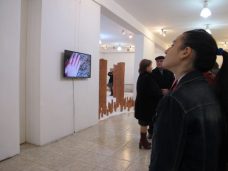
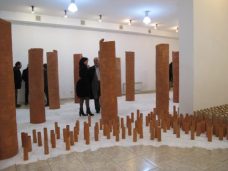
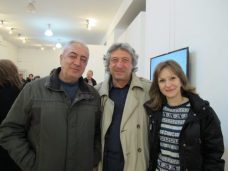
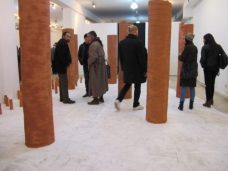
Diner with guests at the Club
The evening ends with a network diner at the Club in Yerevan.
